Massage therapist Maria Barbara “Bambi’’ Mathay roamed the pediatric clinic at Dana-Farber Cancer Institute, looking for takers. It wasn’t long before she spotted Carlie Gonzalez, 15, wrapped in a yellow blanket and weary from seven months of chemotherapy.
Carlie was playing freshman volleyball at Milford High School last fall when an ache in her collarbone became intolerable. A CT scan revealed an aggressive bone cancer that required surgery and potent anticancer drugs that make Carlie nauseated.
Dana-Farber is embarking on its largest expansion yet of unconventional therapies. Over the past year, it has taken the unusual step of offering reiki, an ancient Asian technique, and foot reflexology free of charge to adults and children — as well as acupuncture to adults — in its outpatient infusion clinics during chemotherapy treatments.
The hospital soon will start a nearly $2 million project to convert the first floor of one of its buildings into a new center for “integrative therapies,’’ which eventually could double the number of patients it can accommodate. More than 3,000 patients scheduled appointments for acupuncture and massage last year, a 25 percent jump over 2014.
A growing body of research supports acupuncture as a treatment for pain and nausea in oncology patients, but few high-quality studies exist on the effectiveness of reflexology and reiki.
The investment by Dana-Farber, a leading cancer treatment center, underscores a growing willingness among mainstream medical institutions nationally to offer complementary therapies that appear to help patients — even without definitive proof.
It also signals increasing interest in the potential benefits for children and teens. The Children’s Hospital of Philadelphia, for example, will start offering acupuncture to all patients next month, and massage and aromatherapy to cancer patients within a year.
“Our cancer treatments have gotten better and patients are living longer than ever after diagnosis,’’ said Dr. Jennifer Ligibel, director of the Leonard P. Zakim Center for Integrative Therapies and a breast oncologist. “The flip side is our therapies have a lot of side effects. And traditional Western ways of trying to treat these side effects are pretty limited.’’
Many patients also are burdened with depression, and anxiety that the cancer will return.
Ligibel said Dana-Farber will study different therapies and approaches — including whether 15-minute sessions during chemotherapy improve patients’ quality of life — in part to help guide other providers. “Without research it’s hard to know where resources should be devoted,’’ she said.
To provide reiki, Dana-Farber will train volunteers, many of them cancer survivors themselves. Practitioners place their hands on various parts of a patient’s body, which is believed to transmit positive energy and encourage healing.
The technique is controversial, however. MD Anderson Cancer Center in Houston decided against providing reiki or other so-called “energy therapies’’ because of lack of convincing evidence. In one small study published five years ago in the journal Cancer, researchers found little overall difference in depression and anxiety levels for men with prostate cancer who underwent either reiki, “relaxation response therapy,’’ or were put on a wait list — though reiki seemed to have some benefit for men who were anxious to begin with.
“We can’t say it’s any more than placebo at this stage,’’ said Lorenzo Cohen, director of integrative medicine at MD Anderson. “Patients report feeling better after a session of reiki. Would they feel better just sitting and speaking with an empathic person? They probably would.’’
Ligibel said more research is needed to sort this out. “I struggle with the mechanism of a lot of these therapies, but I’ve seen them work for people,’’ she said.
There is broader agreement on the benefits of acupuncture, which involves inserting thin needles into the skin at strategic points on the body. Traditional Chinese medicine holds that it balances energy flow, while Western practitioners believe it stimulates nerves, perhaps releasing natural painkillers. Memorial Sloan-Kettering Cancer Center researchers reviewed results of clinical trials involving 17,922 patients and found, on average, that acupuncture reduced chronic pain by more than 50 percent. That compared to 42 percent for “sham acupuncture’’ and 30 percent for no acupuncture.
Smaller studies suggest it improves mood and fatigue and relieves chronic dry mouth after head and neck radiation.
Massage looks promising as a way to relax patients and improve their moods, researchers say, though the benefits appear short-lived. And it’s unclear whether adding foot reflexology to the mix increases the benefits. Practitioners believe that pressing spots on the foot that correspond to organs, glands, and other parts of the body can promote deeper relaxation.
Cohen said doctors don’t understand the biological mechanisms of these therapies, which is why there is debate. Still, he said, the risk of harm is nearly nonexistent, and if patients feel better “there is something to be said about that.’’
He recalled a patient in his early 20s, a college football star who had extensive cancer in his bones. He rated his pain as 9 out of 10. A massage therapist was sent to his room to do a light massage. At the end, she asked him his pain level. He said excruciating. She felt bad, but the next day the patient’s nurses paged her to come back. She was surprised and told them it didn’t help.
Free and complimentary reflexology therapies are offered to patients while they get chemotherapy at Dana-Farber Cancer Institute.
“They said, ‘You don’t understand. During the massage he had no pain,’ ’’ Cohen recalled. “That much relief for that period of time, it’s a priceless gift.’’ Providing these services during chemotherapy, he said, exposes more people to their potential benefits.
Mathay, who works four times a week in the outpatient pediatric unit, called the Jimmy Fund Clinic, said 80 percent of the children to whom she provides therapy are repeat clients.
On a recent Wednesday morning, Aaron Keville, 10, was in his final week of chemotherapy. Like Carlie, he was diagnosed with Ewing’s sarcoma in the fall, after his dentist discovered a growth under his tongue. Despite losing 20 pounds, Aaron has done well and his family is planning to transfer to an Air Force base near San Francisco this summer.
Aaron, who had been treated by Mathay previously, is interested in how reflexology works, and Mathay had brought him a chart of showing the pressure points on the feet and their corresponding organs. During treatment, his eyelids fluttered and Mathay suggested he nap. “Then I won’t be able to feel it,’’ he said.
Mathay said she finds patients have less pain, depression, and anxiety after treatment. “A lot of them are here for a very long day,’’ she said. “It’s an oasis.’’
Source: Liz Kowalczyk https://www.bostonglobe.com/staff/kowalczyk
The Healing Place in Medfield, MA USA specializes in helping people of all ages to find relief from chronic digestive problems, chronic pain, and balances hormones naturally. To learn more about our services, or to schedule a consultation go to www.healingplacemedfield.com.
For the Healing Place Medfield’s free report “Proven Alternative Ways to Heal Common Chronic Digestive Problems: What Your Doctor Doesn’t Know Can Keep You From Healing” click here.
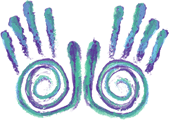
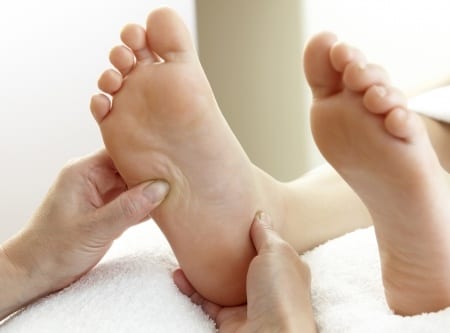
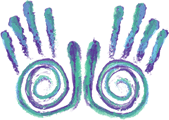


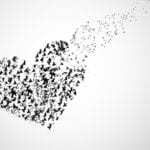


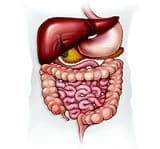

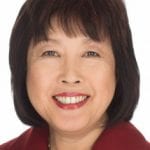 The Healing Place LLC helps all ages to find relief from chronic pain, chronic digestive problems and balance hormones naturally. We practice COVID19 safety. Don’t forget to check on our online school HealingPlaceEnergySchool.com. Thank you.
The Healing Place LLC helps all ages to find relief from chronic pain, chronic digestive problems and balance hormones naturally. We practice COVID19 safety. Don’t forget to check on our online school HealingPlaceEnergySchool.com. Thank you.
Recent Comments